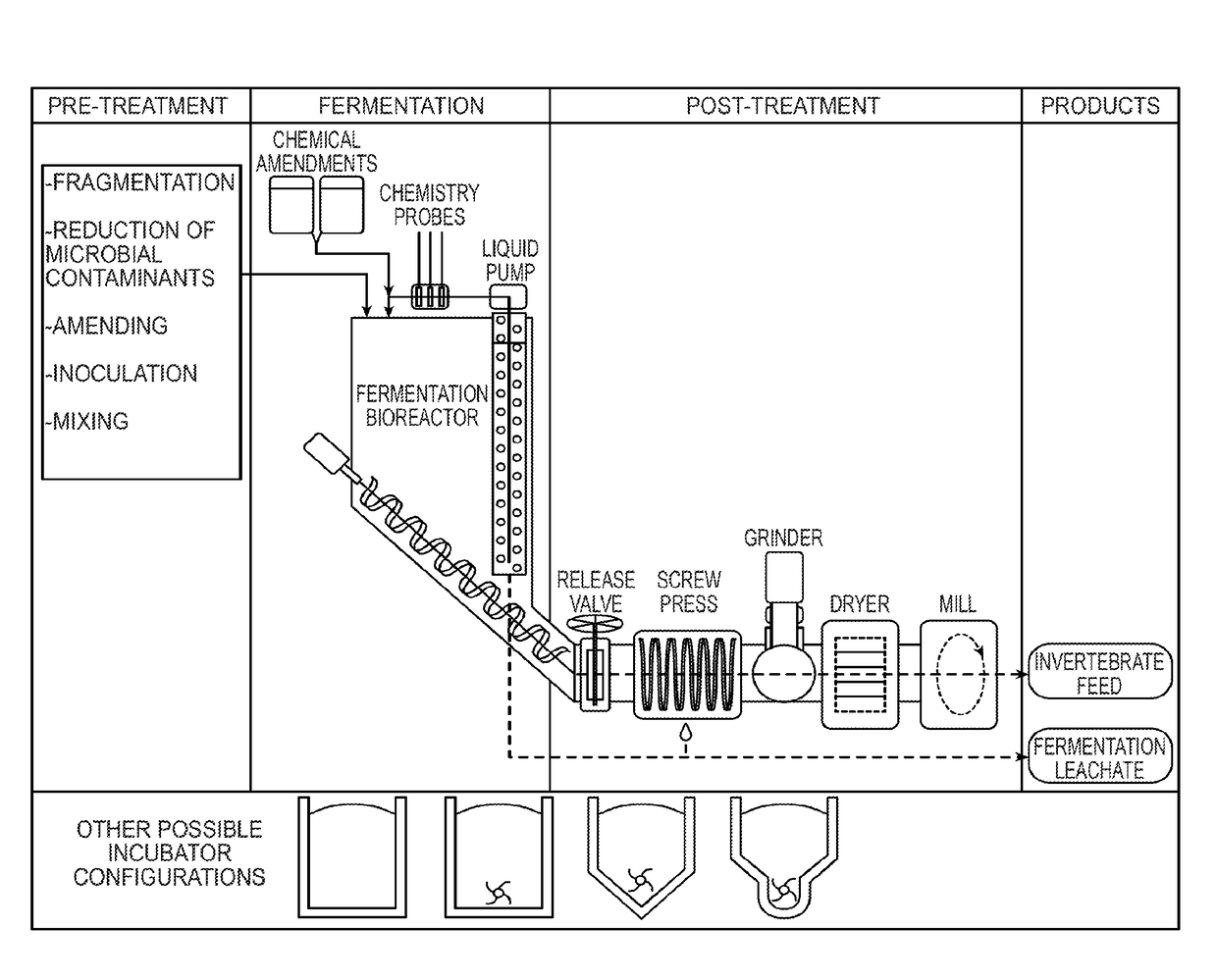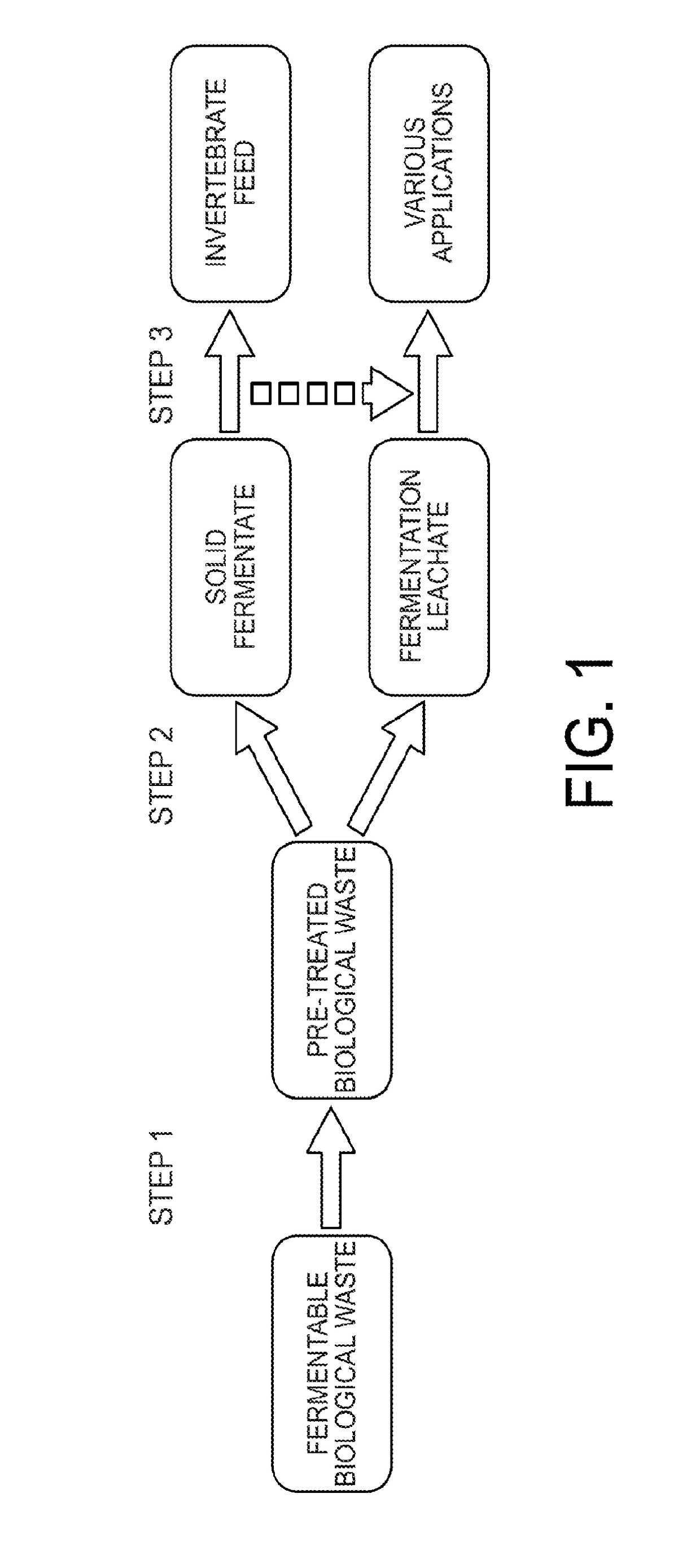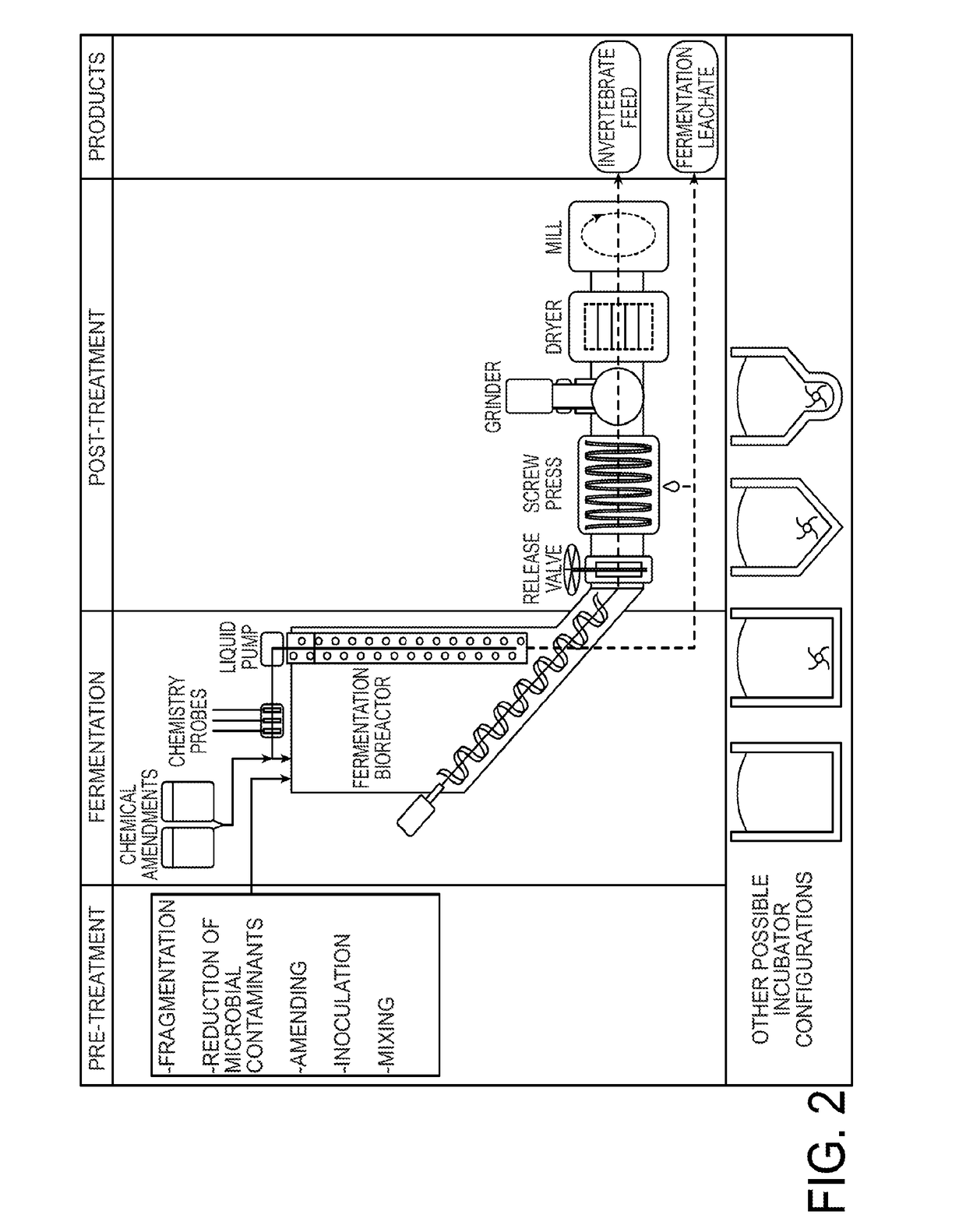Method for converting food waste and other biological waste into invertebrate feed
a technology of invertebrate feed and food waste, which is applied in the direction of biochemical apparatus and processes, transportation and packaging, and specific use bioreactors/fermenters, etc., can solve the problems of affecting aquaculture and poultry culture, affecting the supply of vegetal sources of protein, and out-of-water fish meal needs,
- Summary
- Abstract
- Description
- Claims
- Application Information
AI Technical Summary
Benefits of technology
Problems solved by technology
Method used
Image
Examples
example 1
6.1. Example 1
Production of Invertebrate Meal for Use in Feeding Insect Larvae
[0177]This example describes the production of invertebrate meal and its use to feed insect larvae.
[0178]A bioreactor having a total volume of 200 liters was used. The starting biological waste that was processed in the bioreactor was 150 kg of kitchen food waste and shelf-expired cucumbers. Amendments were spread homogeneously throughout the mixture to ensure the proper evolution of the fermentation. The amendments were 9.38 kg wheat bran, 30 liters of a 20% solution of molasses, and 6.25 liters of biological inoculate obtained from previous fermentation leachates. Previous batches of fermentation leachate were stored and kept chilled to keep as an inoculation for subsequent fermentations. Multiple iterations of this process, for example, 10 or more, resulted in an inoculum very efficient in initiating fermentation towards the desired parameters.
[0179]The bioreactor was closed airtight. Twice a week, leac...
PUM
 Login to View More
Login to View More Abstract
Description
Claims
Application Information
 Login to View More
Login to View More - R&D
- Intellectual Property
- Life Sciences
- Materials
- Tech Scout
- Unparalleled Data Quality
- Higher Quality Content
- 60% Fewer Hallucinations
Browse by: Latest US Patents, China's latest patents, Technical Efficacy Thesaurus, Application Domain, Technology Topic, Popular Technical Reports.
© 2025 PatSnap. All rights reserved.Legal|Privacy policy|Modern Slavery Act Transparency Statement|Sitemap|About US| Contact US: help@patsnap.com



